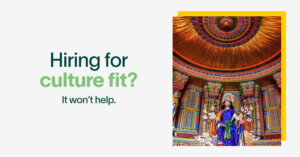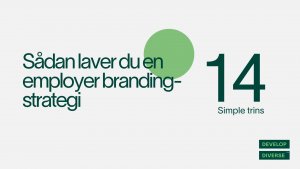Managing diversity and inclusion strategy in an international context will always feel like a challenging task. With so many different office locations, time zones, and languages, your organisation needs to operate across a range of geographical and cultural boundaries to create a cohesive, thriving company that operates to its full potential.
But one misconception we see a lot is that often, organisations make an assumption that because they have an international presence, they don’t have to do the work to foster inclusion from within.
The problem is, inclusion is embedded in your organisation’s culture, not the composition of your workforce.
In this post, we’ll break down how diversity and inclusion interlink, and how to foster greater inclusion among your international teams.
Diversity is about more than just where your offices are
“When we use the word ‘international’, we need to be conscious that we’re not using it as a synonym for inclusive,” says Emil Novák-Tót, Head of Research at Develop Diverse. “Your organisation can be international and only hire across Europe for example — or you might operate offices in China, Zimbabwe, Uruguay and France. Both of those setups are hugely different.
“The reality is that organisations can have a strong international presence, but they can be non-diverse at the same time. Moreover, when you’re an international company with offices in many places, you also have to be honest with yourself on whether or not you’re importing the dominant culture of your headquarters and the country it’s located in, and what that means for your employees on site, and for the culture of the offices around the world.
“Although you might be successful in attracting people from different cultural backgrounds to your company, it doesn’t necessarily mean you know how to respectfully engage with these cultures, or how a specific person relates to their own culture.”
Diversity isn’t a natural consequence of being an international company. And inclusion isn’t the foregone conclusion of increasing your diversity — and that goes no matter what size you are.
Inclusion sustains diversity efforts long-term
Building a diverse company, and creating a workplace where folks of different identities and backgrounds feel welcome is a long-term process. But it all starts with inclusion — and that comes from the intentional actions and behaviours that make people feel welcome and included.
“Very often, we understand inclusion from a perspective of someone feeling included,” says Emil. “In reality, it’s an act. It’s the actions your organisation takes to make sure everyone in your company has an equal chance to have a meaningful input, to get paid fairly, to participate in discussions.”
“Inclusion means that you have the infrastructure and processes that mean everyone has a chance to not just be heard, but also for their work to be meaningfully incorporated into the structure of a company,” says Emil. “It’s about having structure around decision-making that eliminates bias, and that gives everyone a fair chance to be considered and actively included.
“If you don’t have the processes that actively include people — rather than just making them feel included — then diversity can’t work. Without inclusion, employees from marginalised groups are either going to leave, or they’re not going to have the support or channels to add value to your organisation.”
At its core, inclusion has a strong link to psychological safety. Psychological safety describes how we feel able to bring our full selves to work without fear of negative consequences. In a team context, it creates an environment where team members feel safe expressing ideas or opinions.
“Psychological safety is a necessary part of creating inclusion,” Emil explains. “But in the workplace, psychological safety has to be intentionally created and maintained. When psychological safety isn’t present, people don’t feel safe to fully participate, make mistakes, or disagree. Over time, this harms innovation and inclusion.
“If your goal is to build a more diverse and inclusive organisation, you have to realise that you will be bringing in people from different backgrounds that may have workplace baggage and workplace trauma. Psychological safety gives them the forum and channels to contribute — it’s the cornerstone of active inclusion in the workplace.”
Building a diverse and inclusive international organisation — long-term
Building an inclusive organisation is a long-term, continuous process. While it can start with the people you bring in, it’s sustained by your efforts to foster an inclusive, welcoming culture that enables everyone — no matter their location or identity — to feel safe participating and bringing their best to work each day.
Creating inclusion long-term starts with awareness and education — and this is where Develop Diverse can help. Develop Diverse is a science-based inclusive communication platform that enables organisations to attract underrepresented talent, retain their best people, and create more diverse and inclusive places to work.





